|
|
|
|
|
|
|
|
|
|
|
|
|
|
|
|
|
|
|
 |
|
|
|
|
 |
|
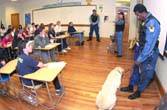 |
|
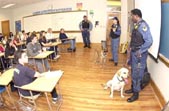 |
|
|
|
|
|
|
|
|
|
|
|
|
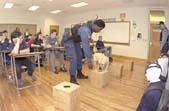 |
|
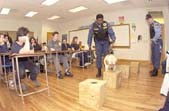 |
|
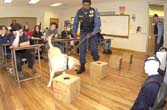 |
|
|
|
|
|
|
|
|
|
|
Firearms School Detection
During the past decades, the impact of gun violence in the United States has been greatest on juveniles and young adults.
Firearms are the weapons of choice in most homicides, with 86 percent committed by juveniles. The dramatic increase of homicides during the mid-to-late 80's and early 90's can be attributed to the use of firearms, particularly among 15 to 24 year olds. The handgun homicide rate for this age group increased 158 percent from 1984 to 1993.
The number of juvenile victims of gun violence was more than twice as high in 1997 than in 1984 (Snyder and Sickmund, 1999).
Firearm injuries are the eighth leading cause of death for juveniles in the United States; for every fatal shooting, there are roughly three nonfatal shootings. Suicides and unintentional gunshot injuries claim the lives of even more juveniles than gun-related homicides. A teenager today is more likely to die of a gunshot wound than of all natural causes or disease (Fingerhut, 1993).
The number of youth who report carrying a gun outside the home is significant. In a 1997 national youth risk behavior survey of students in grades 9 through 12, almost 6 percent reported carrying guns outside the home in the past 30 days (Kahn et al., 1998). According to the same survey, 8.5 percent reported carrying a weapon to school within the past 30 days (Brener et al., 1999).
An earlier study involving 800 inner-city high school students reported that 22 percent said they carried weapons to school (Sheley & Wright, 1993). A study of arrestees from 11 urban areas revealed that nearly one-third of juvenile arrestees who were gang members admitted carrying a gun all or most of the time (Decker, Pennel, and Caldwell, 1997). Two-thirds of those carrying guns stated that the primary reason was self-protection. 84 percent of those who possessed guns said that they obtained them before they were 15 years old (Ash, Kellerman, and Fuqua-Whitley, 1996).
|
|
|
|
|
|
|
|
|
|
|
|
Drug Awareness in the Schools
Not only does drug abuse adversely affect the mental abilities of the student/user, it also has a negative impact upon the entire school through disruptive behavior, increased absences, lower teacher morale, increased violence, etc. According to a recent National Center and Substance Abuse study:
* More than 83% of students are likely to use crack cocaine
* More than 50% are likely to use cocaine
* More than 98% are likely to use methamphetamines, and
* 34% are more likely to smoke marijuana.
All States K9 Patrol/Explosives & Drug Detection provides awareness programs and are trained to sweep the campus environment. Our dogs can pinpoint areas where drugs have been stored even when the substance is no longer there.
|
|
|
|
|
|
|
|
 |
|
.JPG) |
|
|
|
|
.JPG) |
|
|
|
|
|
|
|
|
|
|
|
|
The biggest problem is that everybody is
waiting around for somebody else to fix it.
But nothing will happen unless you do.
Be a part of the solution
|
|
|
|
|
|
|
|






